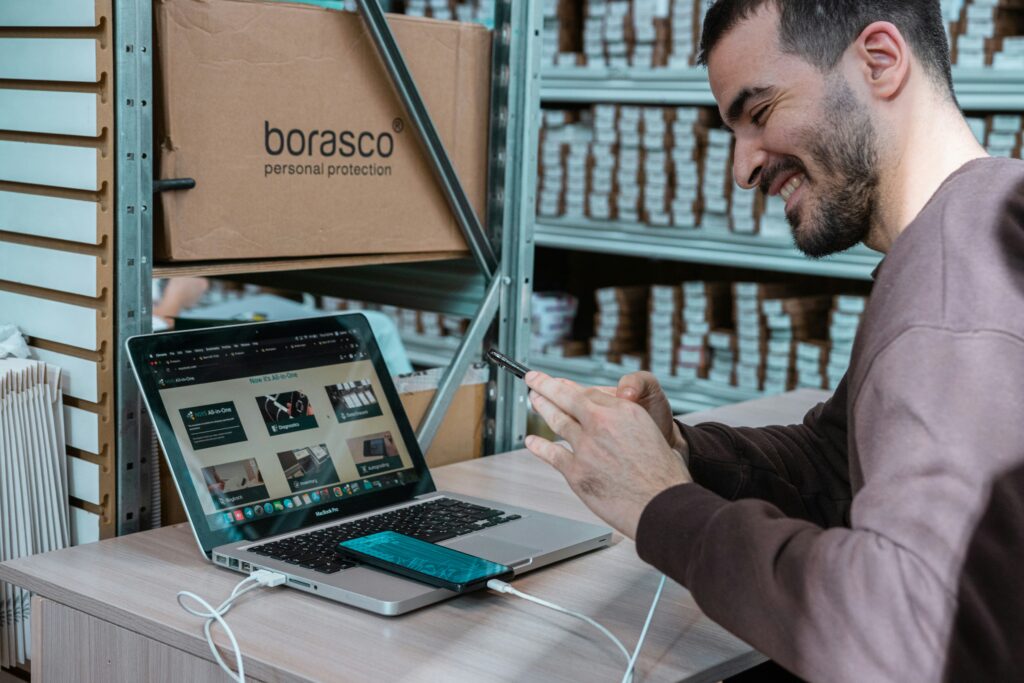
The Role of Telehealth in Modern Rehabilitation Services
Telehealth has revolutionized healthcare delivery, offering accessible and efficient solutions across industries—including workplace rehabilitation. With advancements in virtual tools and remote technology, rehabilitation services are now more accessible than ever, helping workers recover effectively, regardless of their location.
For workers in rural or remote areas, or those facing mobility challenges, telehealth bridges the gap, ensuring they receive timely care. Employers benefit as well, with reduced downtime and streamlined recovery processes. Telehealth isn’t just a convenience; it’s a transformative approach that aligns with evidence-based recovery and tailored injury management solutions.
In this article, we’ll explore the impact of telehealth in modern rehabilitation, its benefits, and practical applications for both workers and employers.
1. What is Telehealth in Rehabilitation?
Defining Telehealth
Telehealth refers to the use of virtual platforms, such as video consultations, remote monitoring tools, and online resources, to deliver rehabilitation services.
Why It’s Relevant Today:
- Increases accessibility for rural and remote workers.
- Reduces barriers for individuals with physical limitations.
- Provides continuity of care without the need for frequent in-person visits.
2. Benefits of Telehealth for Workers
1. Convenience and Accessibility
- Workers can attend therapy sessions and consultations without travel, saving time and reducing stress.
- Remote assessments ensure workers in rural areas receive the same quality care as those in urban centers.
2. Personalized Care
- Virtual tools allow for individualized recovery plans based on real-time data from wearable devices or self-assessment apps.
3. Continuity and Engagement
- Workers stay engaged in their recovery through regular virtual check-ins and access to online educational resources.
Example: A worker recovering from a shoulder injury uses telehealth for physiotherapy sessions, completing guided exercises at home while receiving feedback from a specialist.
3. How Telehealth Benefits Employers
1. Reduced Downtime
- Telehealth facilitates faster interventions, minimizing delays in recovery and return-to-work timelines.
2. Cost-Effective Solutions
- Employers save on travel and accommodation costs for workers in remote areas needing specialized care.
3. Improved Monitoring and Reporting
- Remote tools provide real-time updates on worker progress, allowing employers to track recovery outcomes and adjust accommodations as needed.
4. Practical Applications of Telehealth in Rehabilitation
1. Virtual Assessments and Therapy
- Remote functional capacity evaluations and therapy sessions ensure workers receive evidence-based care without geographical limitations.
2. Wearable Technology Integration
- Devices like smartwatches track physical activity, monitor progress, and provide data for personalized recovery plans.
3. Mental Health Support
- Telehealth platforms offer access to psychologists and counselors, addressing psychological injuries and stress management.
According to recent studies, telehealth adoption in rehabilitation reduces recovery timelines by up to 20% for workers with minor injuries.
5. Challenges and How to Overcome Them
Common Barriers:
- Technological Access: Not all workers have reliable internet or devices for telehealth.
- Lack of Familiarity: Some workers may need guidance on using virtual platforms.
- Hands-On Limitations: Certain physical assessments and treatments may require in-person care.
Solutions:
- Provide workers with user-friendly platforms and technical support.
- Combine telehealth with periodic in-person sessions for comprehensive care.
- Offer training to both workers and employers on telehealth tools and processes.
Rebility’s Role: Our telehealth services integrate seamlessly with in-person care, ensuring a balanced and effective rehabilitation process.
6. The Future of Telehealth in Workplace Rehabilitation
Emerging Trends:
- AI-Powered Diagnostics: Virtual platforms are increasingly using artificial intelligence to provide faster and more accurate assessments.
- Hybrid Models: Combining telehealth with in-person care for a flexible and comprehensive approach.
- Global Reach: Expanding telehealth capabilities to support international workforces.
Conclusion
Telehealth is transforming modern rehabilitation services, making recovery more accessible, efficient, and tailored to workers’ needs. For employers, telehealth reduces downtime and costs while providing real-time updates on recovery progress. For workers, it ensures continuity of care, regardless of location or mobility challenges.
At Rebility, we specialize in integrating telehealth into our workplace rehabilitation programs, combining virtual tools with evidence-based practices for optimal outcomes.
Contact us today to learn how our telehealth solutions can support your team’s recovery and improve workplace productivity.
Other Posts
How SMART Goals Can Revolutionize Your Return-to-Work Plan
How SMART Goals Can Revolutionize Your Return-to-Work Plan "Setting effective, measurable goals for sustainable recovery success."The journey back to work...
Understanding Biopsychosocial Factors: The Key to Sustainable Workplace Recovery
Understanding Biopsychosocial Factors: The Key to Sustainable Workplace Recovery Injury recovery isn’t just about physical healing—it’s a complex process influenced...
How Early Intervention Speeds Up Recovery and Reduces Workplace Disruptions
Elementor #553 Workplace injuries are a reality that both employers and employees must navigate. The sooner these injuries are addressed,...




